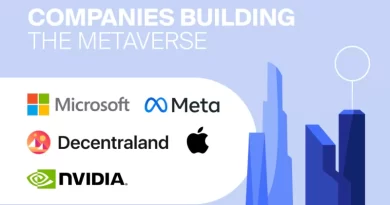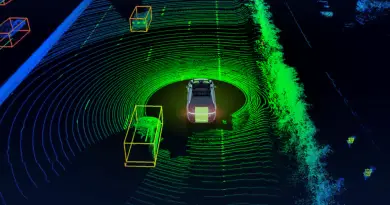Explaining Web3: From the Blockchain and Crypto to NFTs and the Metaverse
There was a widespread belief in the early days of the internet that this new technology would be transformative. It would transform how we communicate, work, and even play. This idealized view of the internet has largely come to fruition. But, as we’ve grown more reliant on the internet, we’ve also seen its dark side. From data breaches to election interference, it’s clear that the internet is no longer the safe haven we once believed it to be.
But what if it was possible to create a new internet? One that was secure, decentralized, and democratized, with the potential to change the way we interact with one another in the digital world. This is the promise of Web3, also known as the Metaverse, a term coined from Neal Stephenson’s famous science-fiction novel Snow Crash, which predicted virtual reality worlds as an evolution of the internet.
Web3 is the internet’s third generation, and it is based on the idea that the internet should be a decentralized network of computers rather than a centralized one. This means there is no single point of failure and no centralized authority controlling information flow.
The Metaverse should not be confused with Web3, the World Wide Web’s third stage of development. The Metaverse is a parallel internet world based on virtual reality in which users can interact with each other and digital objects in 3D space. It’s a three-dimensional virtual world based on the internet. It is an immersive, interactive, and social platform where users can create avatars to represent themselves, buy and sell virtual property, and interact in real-time with other users. Web3 focuses on blockchain technology and concepts such as digital identity, smart contracts, and decentralized applications (dApps). Statista estimates that the global Metaverse market will be worth $47.48 billion in 2022 and will grow to $678.7 billion by 2030.
What Is Web3’s Relationship to the Metaverse?
To begin, the metaverse is a future internet that consists of three-dimensional virtual reality spaces where users can interact with one another. It’s the reason Facebook recently renamed itself “Meta.” Some technologists hope that Web3 will incubate a metaverse built on blockchain systems and open standards and managed by a global network of computers rather than a few large corporations. NFTs would facilitate virtual reality commerce, and traditional gatekeepers would no longer be able to dictate what can and cannot enter the metaverse. In an October public letter, Facebook CEO Mark Zuckerberg waxed poetic about how the metaverse will not “be created by one company” and will establish “a massively larger creative economy than the one constrained by today’s platforms and their policies.” It all sounds nice, but given how hard Facebook has fought to maintain its dominance in the social media landscape, it appears likely that it will continue to strive to be a powerful institution even in a Web3 era.
Why Is There Suddenly so Much Interest in Web3?
Much of the buzz appears to be coming from the cryptocurrency community, which would obviously benefit from a more reliant internet on their technology. Some of the buzz stems from notable companies, such as Reddit, taking steps to get a head start on developing Web3 services and platforms. CoinDesk reported in late October that GameStop is looking for a “Head of Web3 Gaming” and software engineers for an unannounced NFT platform. There has been much discussion about how Web3 could enhance video games by allowing players to more easily buy and sell in-game items or earn tokens that give them more power over how the game is run. However, the Verge speculated that GameStop may simply be using terms like “Web3” and “blockchain” in its job descriptions in order to generate the same kind of viral support it received from alternative investors in January. A potentially more significant recent development was Andreessen Horowitz’s Web3 lobbying push in Washington, D.C., in early October. The company, which has made significant investments in cryptocurrency and other blockchain technologies, stated that it dispatched executives to Capitol Hill and the White House to promote Web3 as a solution to Silicon Valley consolidation and to propose regulations for the burgeoning virtual ecosystem.
Metaverse and Web3 Disruptors of Today
While leading platforms and service providers shift their strategies toward the metaverse, more agile disruptors are raising large sums of money to build the next generation of Web3-native metaverse experiences. These startups use Web3 protocols to build strong networks of users and owners who are all motivated by the same goals. They’re creating immersive and interactive virtual worlds that offer entertainment, goods, and equity by issuing tokens, generating funds and membership through NFT virtual goods, and creating immersive and interactive virtual worlds that offer entertainment, goods, and equity. Many are built on the Ethereum blockchain, allowing for service portability and interoperability. Web3 and metaverse disruptors are frequently autonomous decentralized organizations (DAOs). DAOs govern how the network acts and grows by utilizing blockchains, tokenized incentives, and automated rulesets (smart contracts). As a result, blockchain-based organizations can operate as semiautomated tribes toward shared goals—they are both computers and social networks.
Leadership in DAOs, on the other hand, can be distributed among stakeholders—literally, those members who own the most tokens on the network. This raises the nuances of the debate over centralization versus decentralization once more. Within some networks, the largest token holders have greater influence over the network’s direction, services, and business models. Even now, emerging Web3 companies are establishing themselves as dominant marketplaces and gateways. Web3 may not fundamentally decentralize power and capital, but it can more evenly distribute it among smaller groups. As in the past, the next generation of the internet may be shaped by the emergence of small disruptors capable of quickly capitalizing on change. Because much of the Web3 foundations are present and functional, the boom-and-bust cycles of NFTs and crypto are enabled. This enables innovation, scaling of new commercial applications, and testing them in extreme market dynamics with a large enough user base. Design and implementation lessons can be applied to the next growth curve.
Key Risks and Uncertainties
Many aspects of Web3 and the metaverse are already taking shape, enabling innovations and opportunities while revealing the risks and uncertainties inherent in this disruptive shift. Successful blockchain implementations are progressing, from proof-of-concept to deployments to serving customers. However, many Web3 solutions are highly technical; there are much vulnerability from immature implementations, volatility and asset inflation from both investors and scammers, and a lot of noise clouding the market. There is fragmentation among crypto wallet and identity providers, and there is an increasing need for stability and liquidity guarantees in crypto markets. There is also a need for consistent payment rails across crypto and fiat currencies, as well as thoughtful regulation to support innovation within a reasonable framework.
Furthermore, proof-of-work blockchain’ high energy consumption may slow adoption while increasing operational costs and environmental impacts. The impending shift to more efficient proof-of-stake blockchain, as well as an increase in green energy supply to power these protocols, could help to reduce energy consumption. It may take several years to scale user-centric identity, asset portability and interoperability, and the transition to hybrid models of centralization and decentralization. Alternatively, they could simply empower a motley crew of early adopters and disruptors to forge a new competitive flank. In the near term, disruptors may drive more change as leading incumbents work to strengthen their platforms. This posture may assist leaders in defending their current business, but it may cause them to fall behind if they do not act now.
They will almost certainly need to cooperate and form alliances in order to achieve the metaverse’s critical interoperability. The early advancement of the metaverse may have been hampered by too much hype and criticism, ambiguous definitions, and a tendency to insist on VR and AR as prerequisites. The interface to the metaverse, like the web, should be device-independent. With extensive use cases on mobile devices, for example, augmented reality has advanced without AR glasses being widely adopted.




